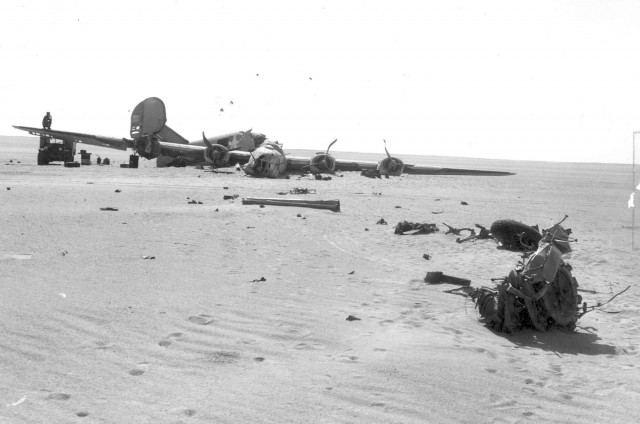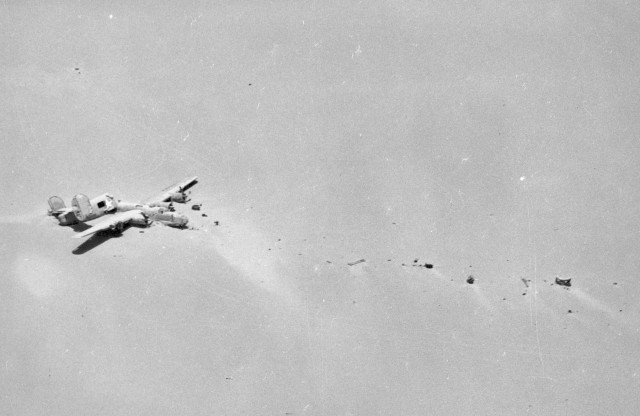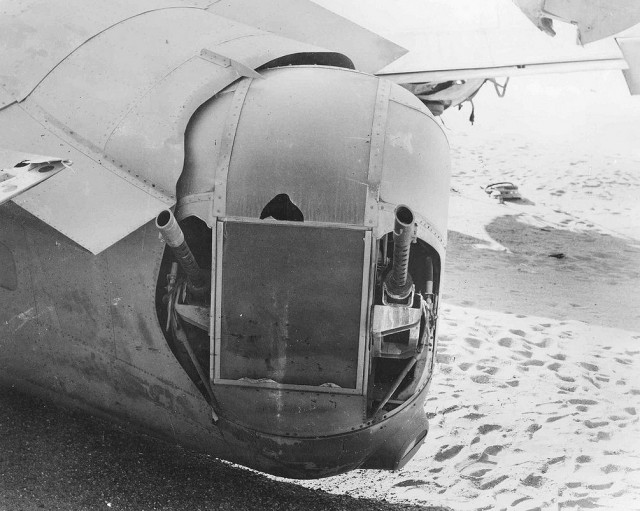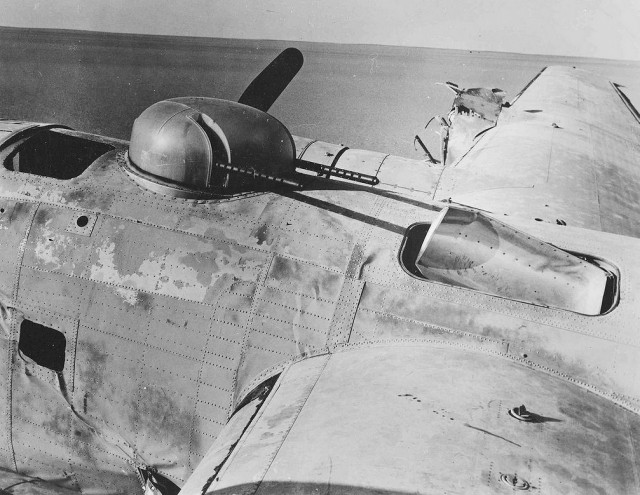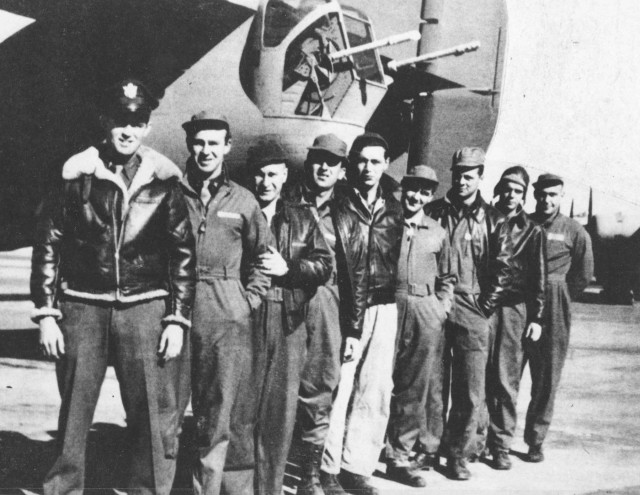The wreckage of a USAAF (United States Army Air Forces) plane that went missing during its first and last mission in the Second World War was discovered in a North African desert. In early November 1958, an oil exploration team from Britain was flying over the Libyan desert, when they unexpectedly spotted the wreckage of a plane in the middle of the desert.
A ground team was quickly dispatched to the crash site in order to investigate the wreckage. It was later revealed that it was the wreckage of a ‘B-24D Liberator’ from the Second World War, also known as the ‘Lady Be Good’. The plane flew for the first time on a bombing mission in Italy in 1943 and lost radio contact shortly after entering a sandstorm.
The USAAF launched a search and ultimately concluded that the plane had crashed into the Mediterranean Sea, after experiencing a malfunction or possibly disorientation. The ground search team that approached the plane started looking into its condition. To everyone’s astonishment, ‘Lady Be Good’ was in surprisingly good condition; its radio was in working condition, along with one of the engines and a 50-calibre machine gun, which could still fire. There were water containers still intact inside the plane. There were no signs of the remains of the crew who were on board ‘Lady Be Good’.
The wreckage of the Lady Be Good in 1958. [Via]Initially, the US military did not pay any attention towards the discovery, but later they sent a team of researchers to investigate and find the remains of the crew members. Research teams scoured the area surrounding the crash site. They followed a few trails; however, they were unsuccessful in finding any trace of the crew members’ remains. The mission was called off due to equipment failure and the harsh conditions in the desert; but, fortunately, the remains of one of the crew were found in the latter part of 1960. Almost 16 years after the disappearance of ‘Lady Be Good’, search teams had a breakthrough about the doomed plane. Connecting the dots between the crash site and one crew member’s remains, the team was able to piece together the circumstances that surrounded the mysterious disappearance of ‘Lady Be Good’.
Tail turret of the B-24D Liberator [Via]On 4th April 1943, ‘Lady Be Good’ took to the skies for the first time with its nine crew members on a bombing mission on Naples. The conditions were not favourable from the beginning, and a severe sandstorm engulfed the plane soon after it took off from Benina airstrip in Libya. Lieutenant Hatton decided to carry on with his mission despite the bad weather, which turned out to be a fatal mistake for everyone on board. Almost zero visibility and thick clouds caused the plane to drift further away from its intended target. The crew tried to make radio contact with the base, but due to some miscommunication their request for a location was not addressed.
Top turret and center fuselage [Via]Eventually, realizing that they were hopelessly off course and disorientated, the crew decided to abandon the plane and all nine members jumped out of it. They were surprised when they landed on sand instead of water, but they decided to walk to the base, which they estimated to be 100 miles away. In reality, their base was more than 400 miles away from where they had landed. One crew member, John S. Woravka, who was a bombardier, was missing; rest of the crew decided to walk north towards the base.
Desert survival experts suggest that in such harsh conditions one could only make 25 to 30 miles. But remains of the crew members were found as far as 100 miles away from the site where they had landed. Search teams also found the journals of some of the crew members, which shed more light on the last days and hours of the ‘Lady Be Good’ crew members.
The crew of Lady Be Good. Left to right: Hatton, Toner, Hays, Woravka, Ripslinger, LaMotte, Shelly, Moore, Adams. [Via]Entries in the journals reveal that they were facing extremely harsh conditions, with a very short supply of water. They continued their walk as far as they could, slowly dehydrating and becoming too weak to carry on, until they perished in the vastness of the desert. The remains of one crew member were found near the crash site. It was suggested by the researchers that the bombardier had a rough landing and probably died on impact, the Damn Interesting reports.
The remains of the eight other crew members of the ‘Lady Be Good’ were brought to the United States, whereas the wreckage of the plane was kept in a compound in Libya. The story of ‘Lady Be Good’ and its crew is one of courage and endurance, for surviving a hundred-mile walk in extremely harsh and hellish conditions is no doubt a great display of human resilience and bravery.


